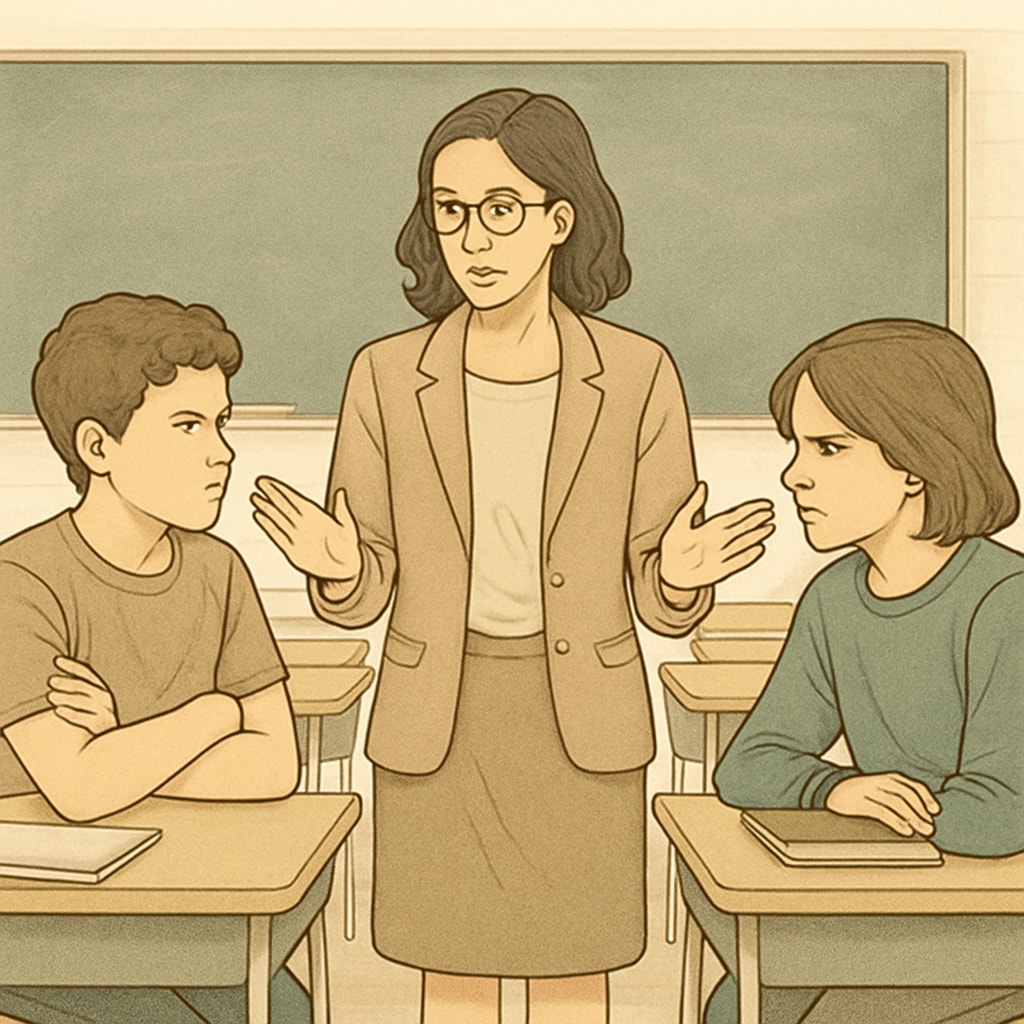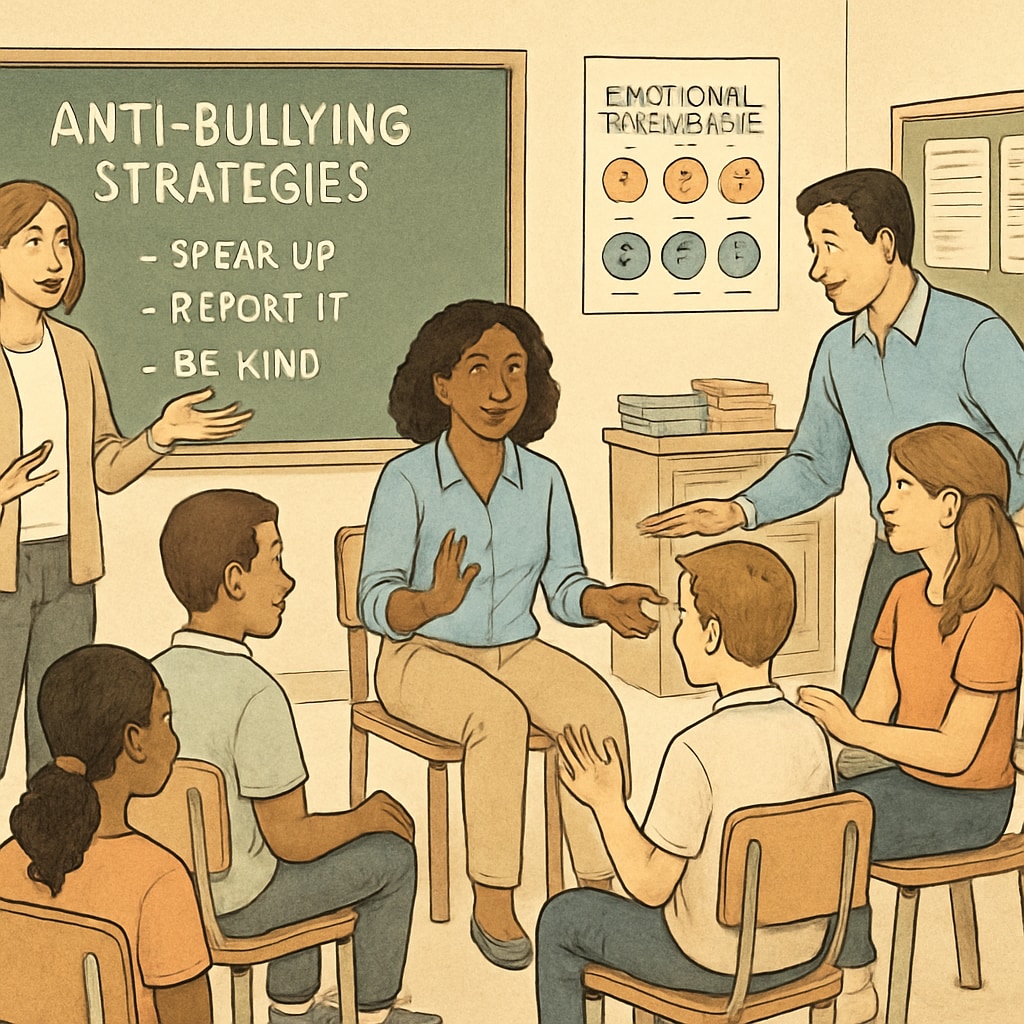School bullying is a pervasive issue that affects the well-being of students, often leaving long-lasting emotional and social scars. Effectively addressing school bullying requires understanding its root causes, implementing proactive intervention systems, and managing the consequences in a way that fosters accountability and growth. In this article, we delve into an ideal framework for dealing with school bullying, offering educators and parents structured methods to identify, address, and prevent such harmful behaviors.
Understanding and Defining Bullying Behavior
One of the first steps in combating school bullying is to clearly define what constitutes bullying. According to Wikipedia’s definition of bullying, it involves repeated aggressive behavior that intentionally causes harm, whether physical, emotional, or psychological. This understanding helps distinguish bullying from normal developmental conflicts, which are often unintentional and lack the power imbalance characteristic of bullying.
Bullying can manifest in various forms, including:
- Physical aggression (hitting, pushing, or damaging property)
- Verbal abuse (name-calling, threats, or insults)
- Social exclusion (spreading rumors, isolating a student from peers)
- Cyberbullying (harassment via digital platforms, such as social media)
Educators and parents must be vigilant in identifying these behaviors early and addressing them before they escalate. For example, frequent complaints of exclusion or avoidance by peers might indicate social bullying, while sudden withdrawal from online interactions can hint at cyberbullying.

Building a Multi-Tiered Intervention System
An effective response to school bullying requires a multi-tiered intervention system that addresses the issue at both the individual and community levels. Such a system can include the following components:
- Prevention Programs: Schools should implement educational programs that teach empathy, communication, and conflict resolution. Programs like the Olweus Bullying Prevention Program have proven effective in reducing bullying incidents by fostering a culture of respect and inclusion.
- Reporting Mechanisms: Establishing anonymous reporting systems can encourage students to come forward without fear of retaliation. These systems should be accessible and well-publicized within the school community.
- Immediate Interventions: Teachers and staff must be trained to respond promptly and appropriately to bullying incidents. This includes separating the individuals involved, gathering statements, and documenting the incident.
- Counseling Services: Both victims and perpetrators benefit from counseling. Victims may need emotional support and strategies to rebuild their confidence, while bullies require guidance to understand the impact of their actions and develop healthier behaviors.
By integrating these elements, schools can create a supportive environment that discourages bullying and promotes positive interactions among students.

Distinguishing Bullying from Normal Behavioral Development
It is essential to differentiate between bullying and normal developmental behavior to ensure that interventions are both fair and effective. Children and adolescents often experience conflicts as part of their social development. These conflicts, while sometimes intense, are usually resolved without lasting harm and do not involve a repeated power imbalance.
To distinguish bullying from normal behavior, consider the following criteria:
- Repetition: Bullying involves repeated actions over time; a single argument or fight does not constitute bullying.
- Intent: Bullying is intentional, aiming to harm or intimidate the victim.
- Power Imbalance: There is an unequal dynamic, where the bully holds more power, whether physical, social, or psychological.
For example, two friends arguing over a game is likely a developmental conflict, whereas one student consistently spreading rumors about another to damage their reputation fits the bullying criteria. Educators should carefully assess situations to apply the appropriate response.
Managing Consequences and Promoting Accountability
Addressing the aftermath of bullying is as critical as preventing it. When consequences are managed effectively, they not only hold the bully accountable but also offer opportunities for personal growth and reconciliation. Here are some strategies:
- Restorative Practices: Encourage the bully to take responsibility for their actions through activities like writing an apology letter or participating in mediated discussions with the victim.
- Educational Assignments: Assign reflective tasks, such as researching the effects of bullying, to help the perpetrator understand the broader impact of their behavior.
- Behavioral Contracts: Develop agreements that outline specific changes in behavior, with clear consequences for non-compliance.
For victims, schools should provide ongoing support, such as regular check-ins with a counselor or teacher, to ensure they feel safe and valued. Combining these measures with a school-wide commitment to anti-bullying policies creates a safer and more inclusive environment for all students.
In conclusion, addressing school bullying requires a multi-faceted approach that includes clear definitions, proactive interventions, and effective consequence management. By fostering a culture of empathy and accountability, schools and parents can work together to create a safe and supportive environment where all students can thrive.
Readability guidance: The article uses short paragraphs and lists to summarize key points. Transition words ensure a smooth flow, while technical terms are defined for clarity. The use of images aligns with the content, providing visual context for the discussed strategies.


